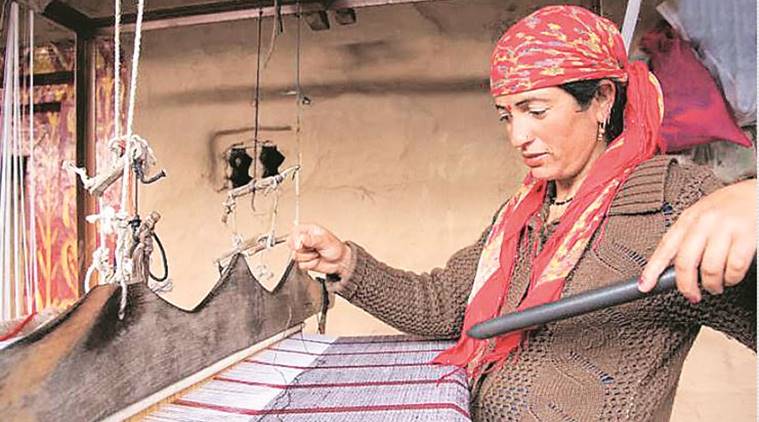Threads of Tradition
Ethicoco is project that is focussed on the revival of traditional weaving in the Himalayas.

Weavers in Himachal Pradesh that are part of Firdaus Kanchan Rana’s project.
THE mountains echo Firdaus Kanchan Rana’s creativity and spirit for revival, as she finds solace in her calling. A graduate from National Institute of Fashion Technology (NIFT) Bangalore, the 34-year-old designer worked in Auroville for five years, before moving to Kinnaur and then Manali in search of her dream, “which was to take something from the nook and corner of the country and give it a new shape and form.”
It all began with an extensive research and documentation of the ethnographic history of costumes, their weaving, and a recording of the motifs found along the “Wool Road” of Himachal Pradesh. Due to the unique cultural origins, varied production methods and a fairly vast array of design patterns, textiles in the Western Himalayan belt of India pose intriguing questions about their origin, meaning and traditional use, explains the designer. “In some cases, the answers are only available through scholarly piecing of information completing a jigsaw,” says Rana, who established Ethicoco in 2010, the mantra of which is traditional techniques, timeless design.
Rana, here to showcase her designs at Threads of Life, a platform for handmade products, describes her work and research as a “revival story”. Working extensively with weavers, spinners and dyers of the region, who are associated with self-help groups, she is guided by the mantra that for preservation, constant creation, is the key.
The weaving of both the Kinnauris and Kulluvis, adds Rana, form an important part of India’s cultural heritage and deserve the recognition that is their due. But the weavers in this region, she says, are facing increasing economic hardships due to the difficulty in procuring raw materials, and competition with the power loom sector. Traditional weaving all over India is being lost and/or degraded, as weavers find that it is more cost effective to weave coarser, simpler motifs which are less labour intensive and, therefore, cheaper and easier to sell in greater quantities. The result is that many of the finer, more intricate, traditional patterns are lost, because they are no longer woven. Also, in some cases, the art is in danger of simply dying out because the younger generations are not interested in working so hard to earn a meager living. The key function of design or craft is to be deeply interwoven into the lives of people and that’s what Rana is striving to do.
“As a designer, I do understand that our creations are part of bigger stories and we must be able to employ objects as aesthetic companions and catalysts in life experiences. Through hand-spun garments, textiles, we should be able to beautify our lives with meaning. When one tries to build a bridge to historical realities — the present must become the place of application or implementation, for it is the only possibility, ” she says.
Rana’s new project is ‘Tessuti Himalay’, which means textiles made in Himalayas, where she is working with weavers to create tweed on handloom, using Marino wool, and matching the technical specifications of Tweed in Europe. Done on shuttle looms, Rana agrees it was a tough process, as they had to work for months to get the weight right, which is 250 gms per metre.
“How many threads to use, how tightly to spin, making graphs for the weavers to count threads, trying out as many as 200 variants of colour, it was a challenge. I remember how one weaver was singing while working and didn’t focus on the consistency of the weave. But we have been able to create a stunning and high quality range, and we want to build a bridge, go from rural to global,” says Rana. One of the main efforts of the project is to give livelihood to weavers, helping them sell, finding solutions to suit today’s time and Rana hopes more people would join the journey and give her vision support and a new dimension.






















No hay comentarios:
Publicar un comentario